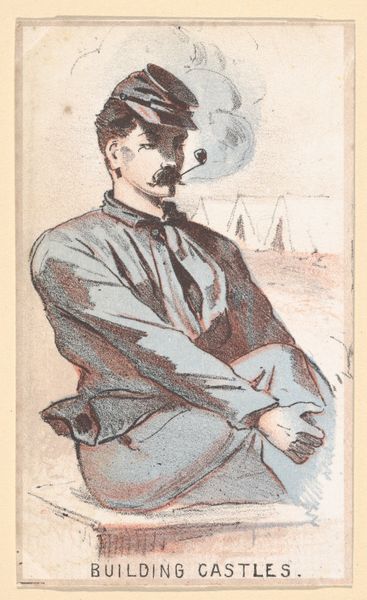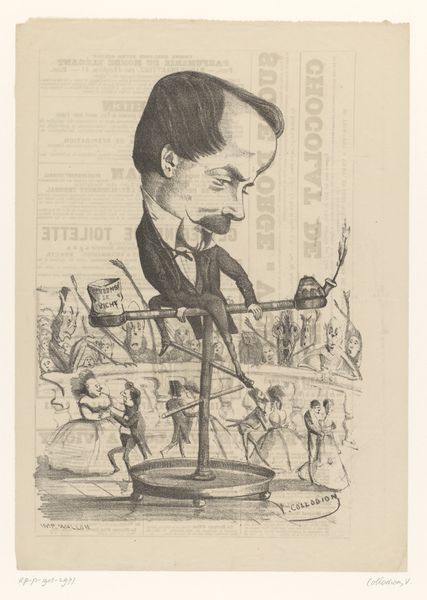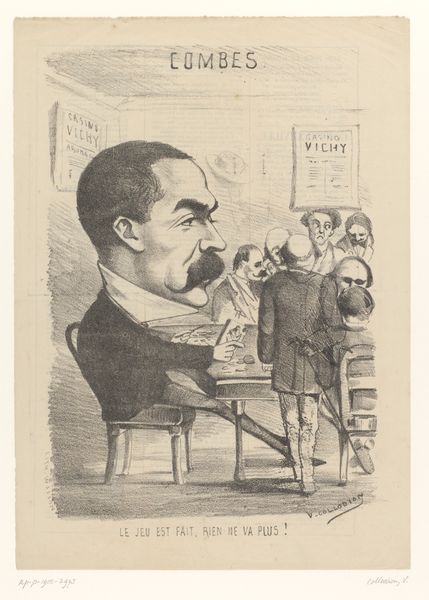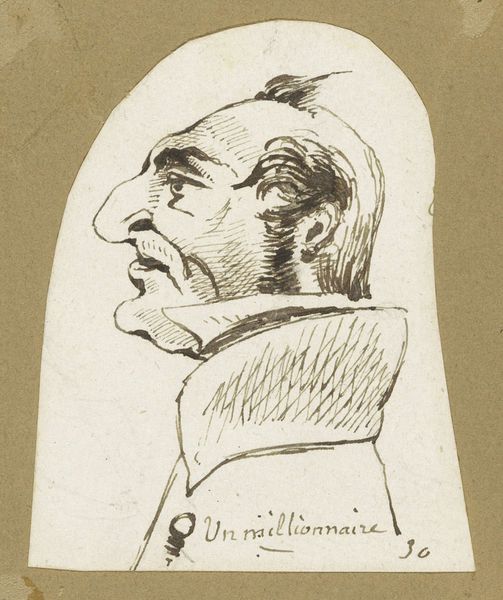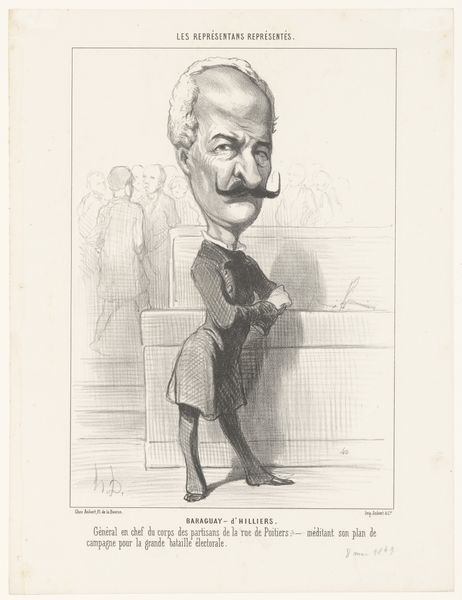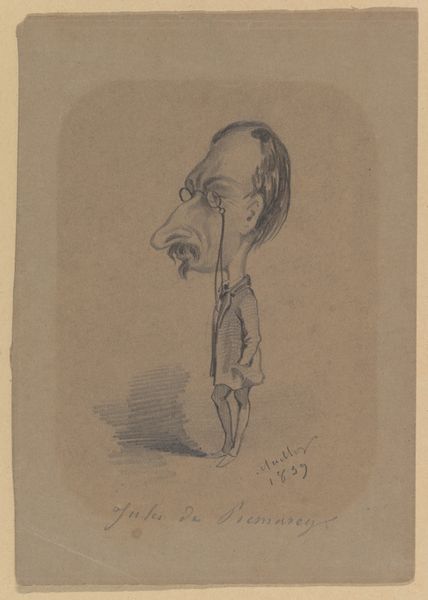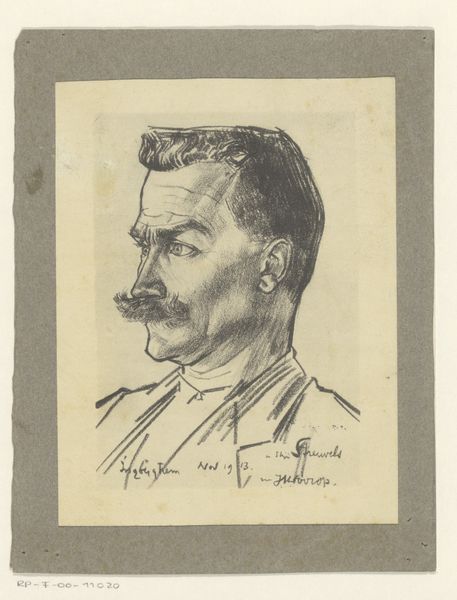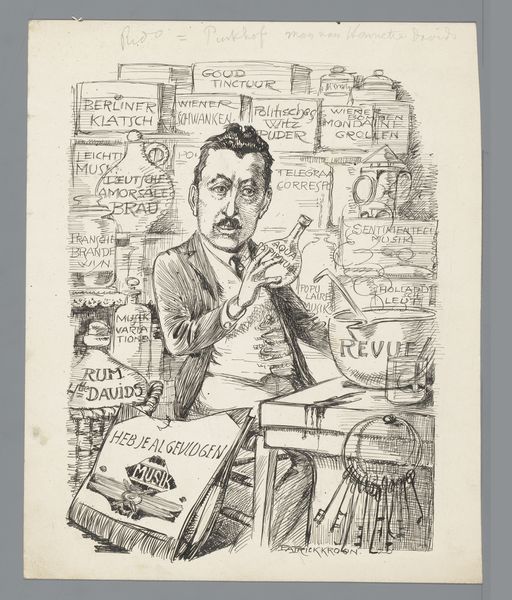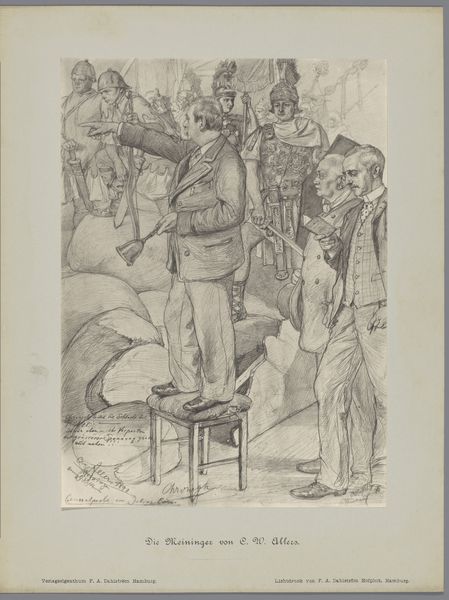
drawing, pencil
#
portrait
#
pencil drawn
#
drawing
#
facial expression drawing
#
light pencil work
#
caricature
#
pencil sketch
#
caricature
#
personal sketchbook
#
portrait reference
#
idea generation sketch
#
pencil
#
portrait drawing
#
pencil work
#
genre-painting
Dimensions: height 433 mm, width 334 mm
Copyright: Rijks Museum: Open Domain
Curator: Here we have "Caricature of the Dance Teacher Henri Cellarius," a pencil drawing by Victor Collodion from 1866. Its stark black lines on the off-white paper give it a rather whimsical air. Editor: Whimsical is certainly one word! My initial impression is that the artist uses hyperbole to exaggerate the power dynamics at play within performance and perhaps within the dance school itself. It strikes me as a visual critique of power structures. Curator: An astute observation. Technically, observe how Collodion manipulates scale and proportion. The disproportionately large head and elongated limbs distort Cellarius’ figure, but do so in a way that accentuates movement. There's a visual rhythm established. Editor: Exactly. The distortions draw attention to how bodies, particularly male bodies, are both celebrated and subjected to ridicule. In that time, what did it mean to display someone like Cellarius in such a way? The caricature highlights not just his profession, but also comments on his status as a performer. Curator: I'm intrigued by the intentionality in Collodion's pencil strokes. Notice how he varies line thickness to create depth and texture. This skillful handling of line work gives Cellarius’s figure a surprising sense of volume despite the flat medium. It adds to the almost theatrical sense of drama. Editor: I would argue that the drama underscores a certain unease of who this "H. Cellarius" really was beyond this image and that the background’s faint traces of a poster or other printed material place this drawing in dialogue with the wider political, commercial, and artistic networks of its time. Curator: Well, that’s certainly one valid reading. The careful artistic choices really encourage the viewer to focus on the details. Thank you for pointing out these broader implications! Editor: Of course. This drawing sparks important questions about the purpose of caricature in visualizing both the powerful and perhaps not-so-powerful people and institutions that surround us.
Comments
No comments
Be the first to comment and join the conversation on the ultimate creative platform.
